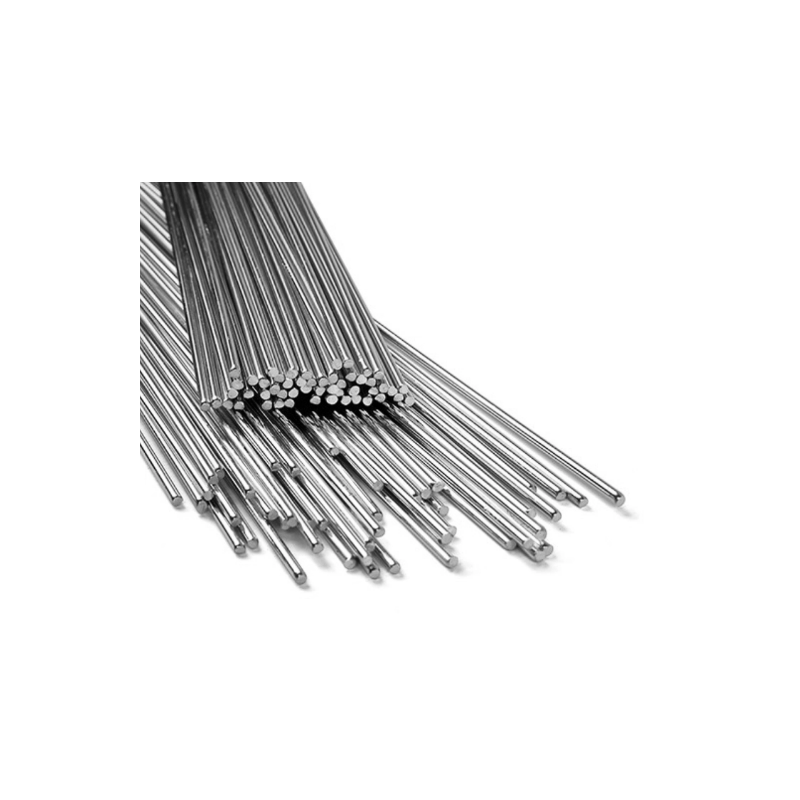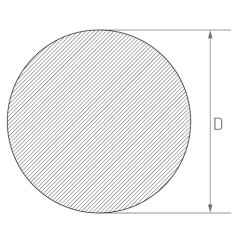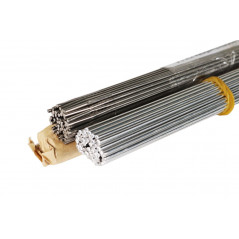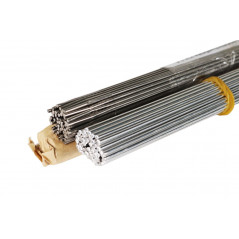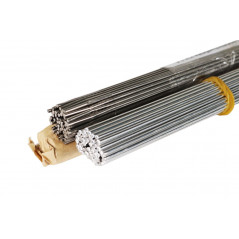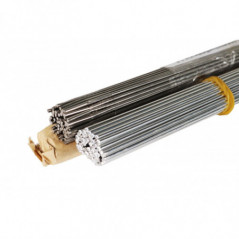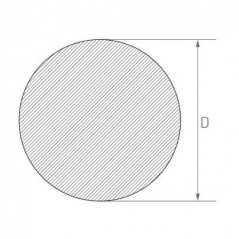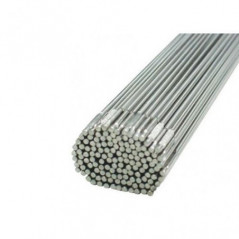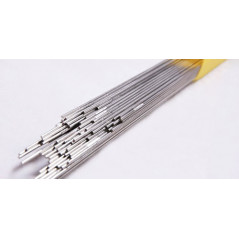Welding wire TIG 2.4627 Welding electrodes NiCr22Co12Mo9 Nickel Welding rods Ø0.8-5mm
Welding wire TIG 2.4627 welding electrodes NiCr22Co12Mo9 nickel welding rods Ø1-5mm
Length tolerance +/-2mm
Description:
Nickel-based alloy with high heat resistance combined with excellent mechanical strength. The material 2.4627 is a high-temperature alloy. These welding rods are used for welding nickel-chromium-cobalt-molybdenum alloys. The material 2.4627 can also be used for overlay cladding where a near alloy is required, e.g. B. in gas turbines and ethylene plants.
The weld metal gives good strength and oxidation resistance above 800 to 1150 °C, especially when welding on base metals of nickel-iron-chromium alloys.
Please note the permissible operating temperatures for the filler material and the base material: 2.4663, 2.4851, 1.4958, 1.4876. Inconel alloys 800HT and 803 and cast alloys such as HK-40, HP and HP-45 Modified.
Properties of the material 2.4610:
- good durability
- resistance to deformation
- excellent corrosion resistance
Use of the material 2.4627:
- high heat resistance
- excellent mechanical strength
- good strength and oxidation resistance
Main application of the material 2.4627:
- gas turbines
- ethylene plants
- Nickel-chromium-cobalt-molybdenum alloys
- Nickel-iron-chromium alloys
If you would like to find out more about the possibilities of our online shop Auremo, we recommend that you take a look at our range. With us you will not only find electrodes, but also wires, sheets, rods and rare metals at reasonable prices.
Technical specifications:
| Brand: | auremo |
| Manufacturing Country And Region: | Germany |
| manufacturer number | Not applicable |
| Type: | welding electrodes |
| Norm classifications: | |
| Material number: | 2.4627 |
| EN ISO 18274 | S Ni 6617 |
| AWS SFA-5.11 | ER NiCrMo - 1 |
Chemical composition (in %):
| C | Al | Cr | co | Mon | no |
| 0.1% | 1.2% | 22% | 12.5% | 9% | rest |
Mechanical properties (room temperature):
| Tensile strength Rm MPa | Yield strength Rp 0.2 MPa | Impact work ISO-V J | Elongation at break A5% |
| 700 | 400 | 60 | 30 |












